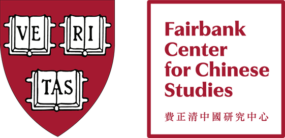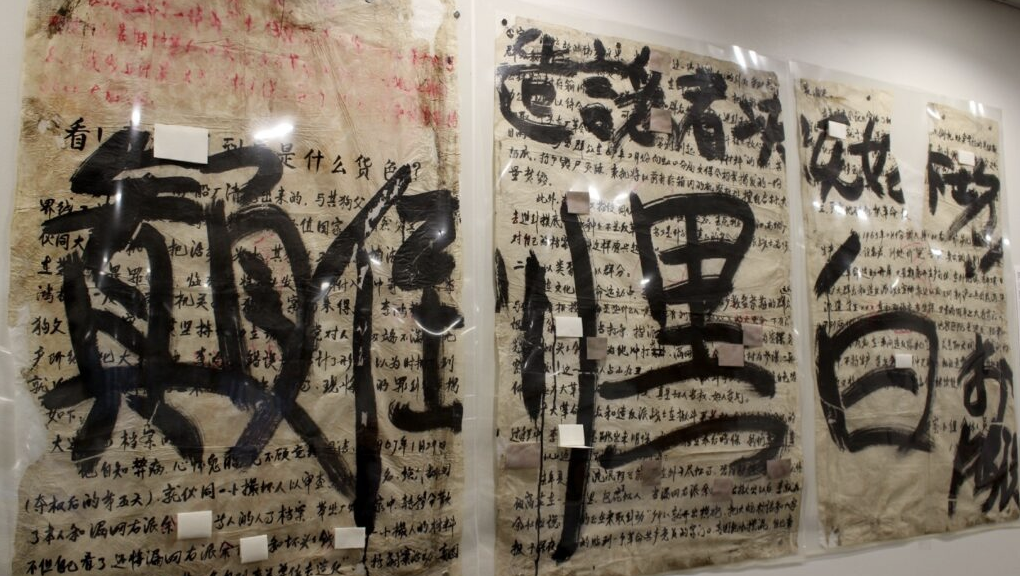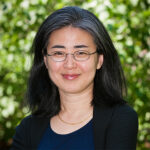As part of the Fairbank Center’s exhibition of dazibao (大字报 “big-character posters”) and woodcuts from 1960s China, we present a four-part series on Cultural Revolution-era artworks. Xiaofei Tian, Professor of Chinese Literature at Harvard University, presents part 2: an exploration of the imagery and visual dynamism of dazibao.
Read Part 1: Reading “Big-Character Posters” by Denise Ho on our blog.
Read Part 3: Dazibao Exhibitionism by Jie Li on our blog.
Read Part 4: Pictoral Posters by Julia Murray on our blog.
The exhibition, “Red and Black Revolution: Dazibao and Woodcuts from 1960s China” is on display at Harvard University’s Fairbank Center for Chinese Studies from November 9 -30, 2017.
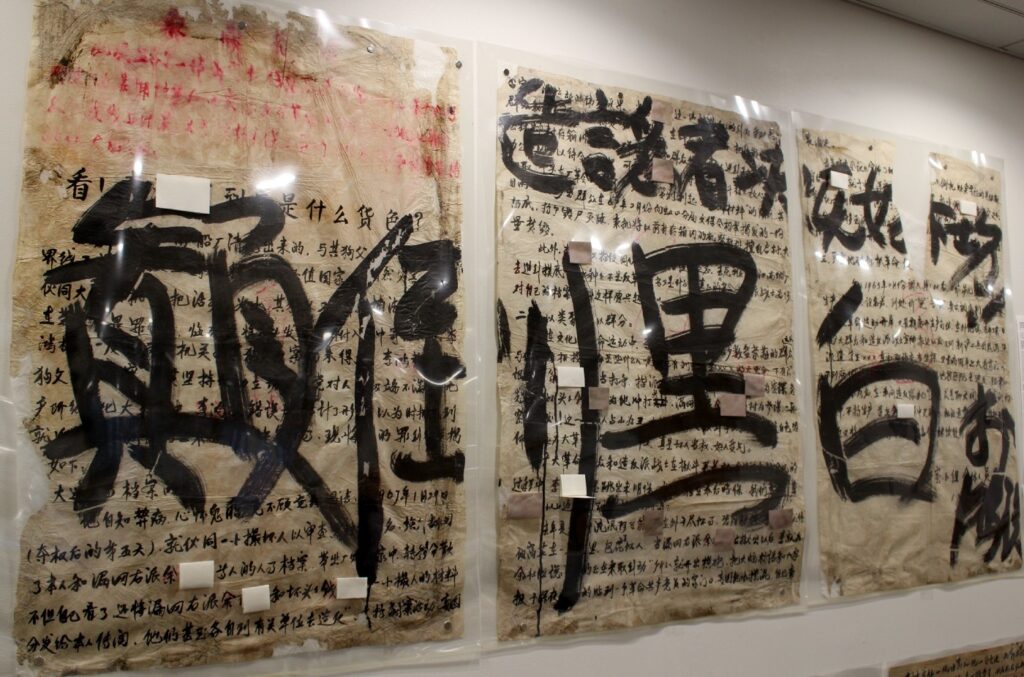
As words displayed in public places and intended for public consumption, big-character-posters can be situated in a long tradition of such words, ranging from the “correct versions” of Confucian classics carved on stone steles and erected in front of the National University in the capital, read and copied by scholars coming from all over the empire, to “poetry boards” hanging in temples and post-stations, to inscriptions in landscape, and in taverns, inns, and brothels.
Seen in this tradition, big-character-posters occupy a unique place, for they are almost without exception vilifying and angry words, and they functioned as much as images as words. In other words, the power of the big-character-posters did not just derive from their venomous content, but also from the visual spectacle they formed en masse.
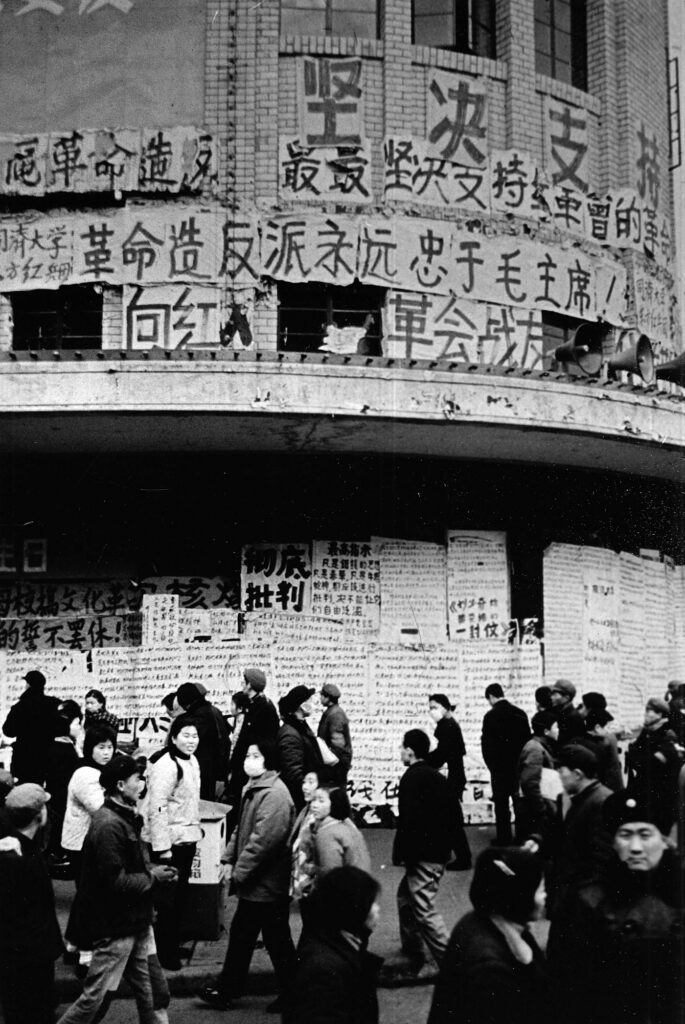
One could try to avoid reading them — even though one of the posters in this exhibit exactly denounced someone for not wanting to read big-character-posters (“心中有鬼就害怕革命的大字报,” “看大字报就混身出汗”); but one could not avoid seeing them everywhere one went (one poster reveals that the employees of just one Electricity Supply Bureau had produced well over 2,000 big-character-posters as soon as the Cultural Revolution started). At the height of the Cultural Revolution, one could find oneself drowning in an oppressive sea of abusive words at every turn one made. Indeed, I believe that some big-character-posters were not meant for reading, but rather were meant for viewing: a small, but important, difference.
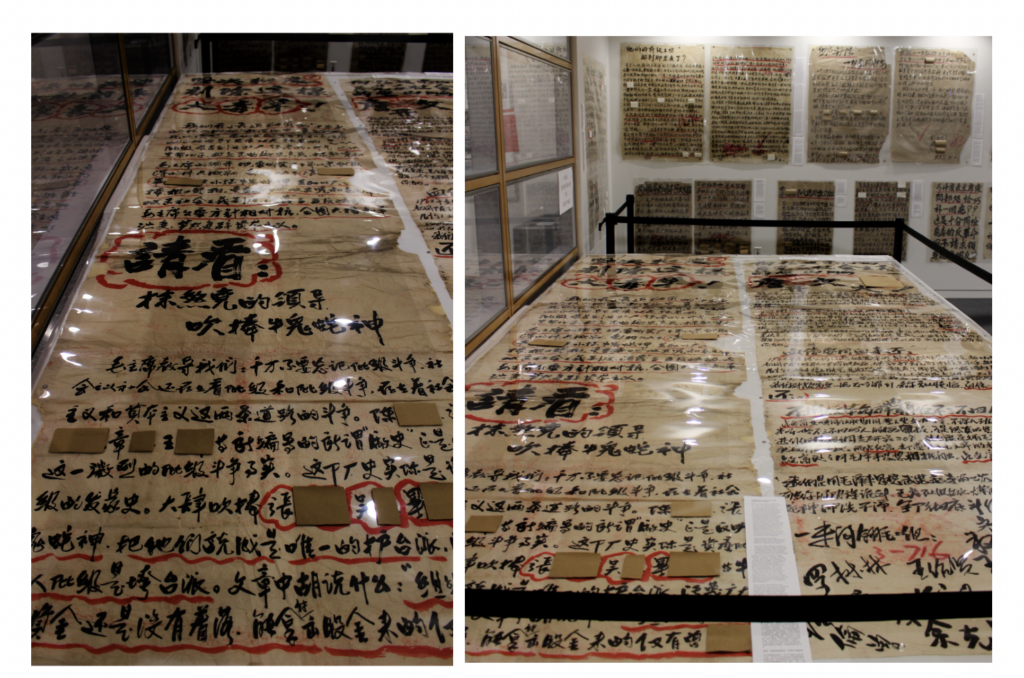
Big-character-posters could, and did, serve as a venue for the discontented masses (qunzhong) to express indignation at corruption and the abuse of power, not necessarily motivated by faction struggle or ideological passion. This big-character-poster is fascinating in its vivid representation of the purportedly corrupt Communist Party Secretary’s dialectal speech (“你晓不晓得我要你干啥子的?!”), as well as its mention of “making a face” and of a hearty laugh at the expense of a self-important party official. Though remaining largely caustic and satirical, there is some humor, perhaps unintended, in this particular poster, which is rare to see in big-character-posters, for humor is the very antithesis of revolution.
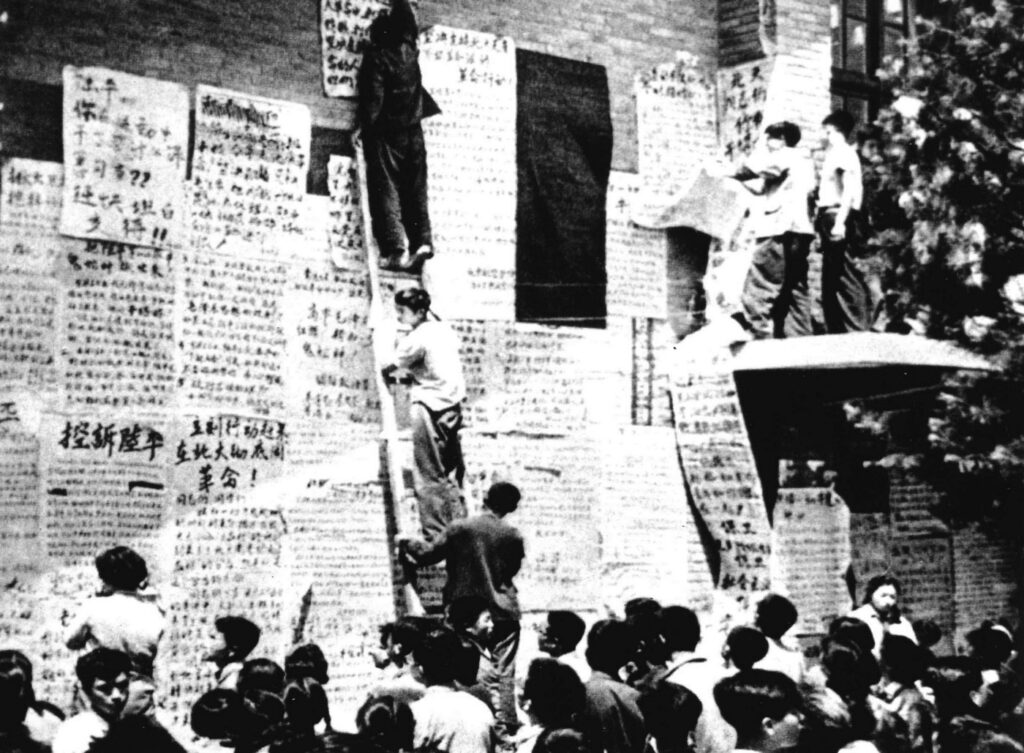
One of the most notable rhetorical characteristics of the “great revolutionary criticism style” is the use of imperatives. Nowhere do we see more clearly the prominently optical nature of the Cultural Revolution than this imperative verb, “Look!” which features conspicuously in many big-character-posters in this exhibit. It beckons to people and commands them to look and read.
Not only are people compelled to produce big-character-posters, but they are also compelled to read and look. If a person resists, it can be construed as a demonstration of his or her guilty conscience. The body reading and looking is also closely monitored, so that any out-of-the-ordinary physical reaction to the big-character-posters, such as sweating, is also regarded as a sign of guiltiness. It is one of the most peculiar forms of torture in human history, and the effects of the trauma are felt in Chinese society, and are often passed on from one generation to the next, long after the Cultural Revolution is over.
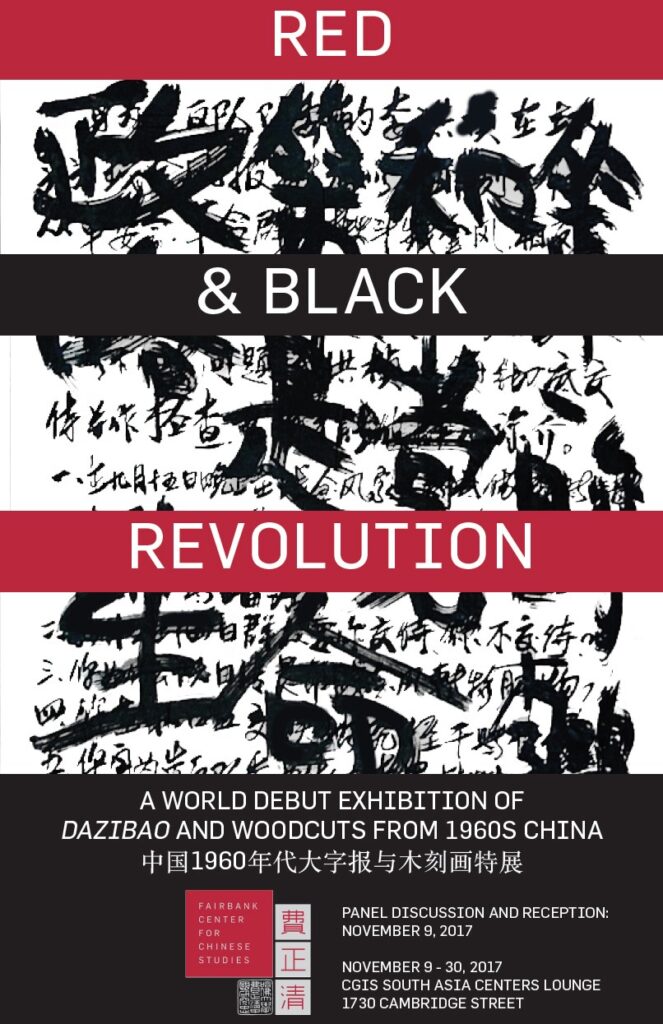
Xiaofei Tian is Professor of Chinese Literature at Harvard University. Her book, The Halberd at Red Cliff: Jian’an and the Three Kingdoms (Harvard University Press, 2018) explores China at the turn of the third century CE, also known as the Three Kingdoms Period .
The exhibition, “Red and Black Revolution: Dazibao and Woodcuts from 1960s China” is on display at Harvard University’s Fairbank Center for Chinese Studies from November 9 -30, 2017.
Read Part 1: Reading “Big-Character Posters” by Denise Ho on our blog.
